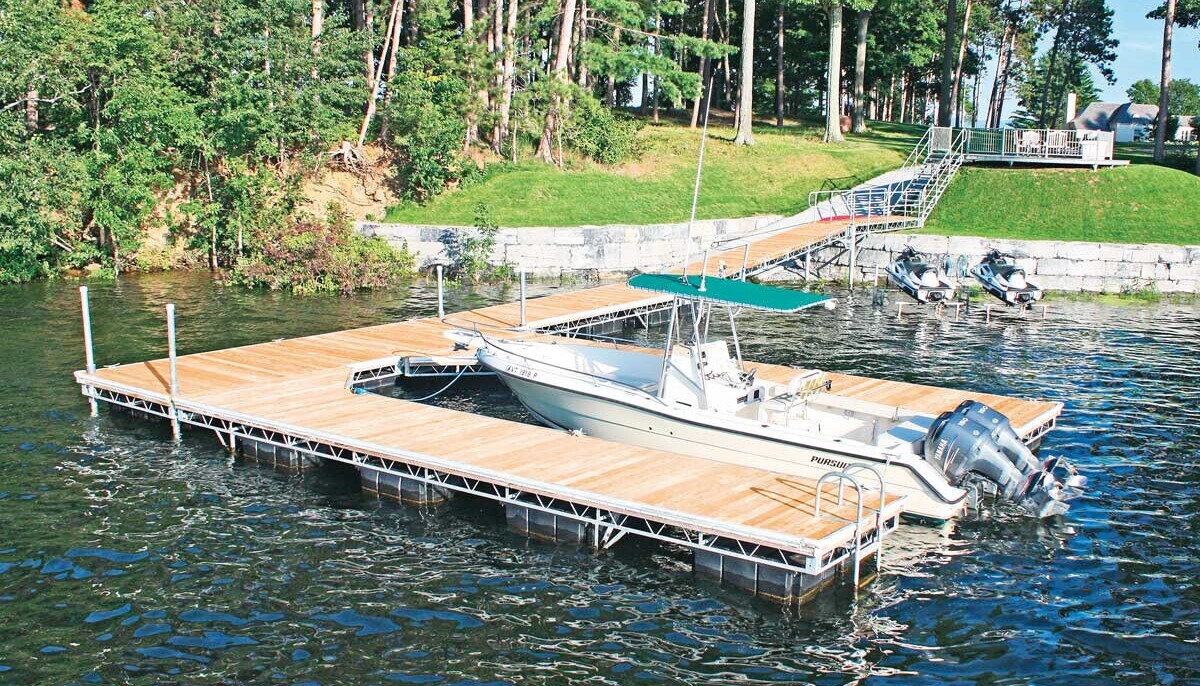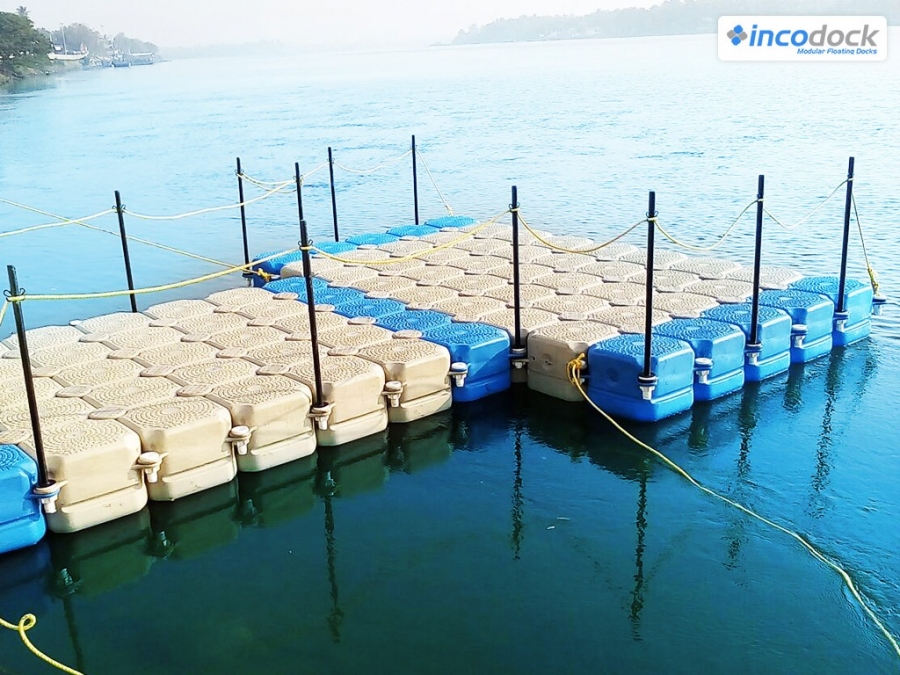Develop the Perfect Docking Remedy With Floating Docks
Floating docks present a versatile option for a selection of maritime demands, adjusting effortlessly to fluctuating water degrees and diverse vessel kinds. As we discover the necessary aspects that add to the efficiency of floating docks, a number of essential factors relating to security and maintenance will certainly emerge, raising questions regarding how to enhance your docking experience.

Advantages of Floating Docks
Floating docks deal many benefits that make them an optimal option for different maritime applications. One of the key advantages is their adaptability to transforming water levels. Unlike taken care of docks, floating docks fluctuate with the trend, guaranteeing regular ease of access for vessels. This feature is specifically vital in locations prone to considerable tidal changes or seasonal water level modifications.
Additionally, floating docks are normally less complicated and quicker to set up contrasted to typical set frameworks. Their modular layout enables uncomplicated assembly and disassembly, assisting in upkeep and relocation when required. This adaptability is especially beneficial for momentary applications or in atmospheres where problems might transform.
Floating docks additionally tend to be much more environmentally friendly, as they reduce disturbance to the seabed and surrounding aquatic ecosystems. Their resilient nature reduces the threat of damage to aquatic life, advertising a healthier atmosphere. Furthermore, these docks can be tailored to suit different vessel dimensions, ensuring that they satisfy details operational demands - floating dock company.
Ultimately, the mix of flexibility, ease of installation, and ecological factors to consider makes floating docks a very efficient solution for a vast array of maritime needs.
Choosing the Right Products
Picking the ideal materials for floating docks is crucial to make sure durability, security, and longevity. The option of products directly affects the dock's efficiency in various ecological problems, consisting of exposure to water, sunlight, and prospective wear from aquatic traffic.
Usual materials made use of for floating docks include light weight aluminum, wood, and high-density polyethylene (HDPE) Aluminum is light-weight, corrosion-resistant, and needs very little maintenance, making it an excellent option for longevity. Nevertheless, its first expense can be greater compared to various other products.
Timber, while visually enticing and offering a standard look, can be vulnerable to rot and bug damages if not correctly dealt with. As a result, making use of pressure-treated wood or naturally long lasting types like cedar or redwood can alleviate these issues.
HDPE is a popular selection because of its resistance to UV rays and chemicals, in addition to being ecologically pleasant. dock company. It is readily available and light-weight in various shades, enabling modification
Inevitably, the appropriate product choice will certainly depend on particular demands, consisting of budget, preferred visual appeals, and ecological considerations. Careful evaluation of these variables will result in a successful and durable floating dock remedy.
Layout Considerations for Security
When designing floating docks, guaranteeing security is a fundamental facet that can considerably influence their capability and safety. Stability in floating dock layout is influenced by different aspects, including buoyancy, weight distribution, and the plan of elements.
Weight distribution is important; evenly dispersing tons throughout the dock avoids turning and enhances stability. Wider designs can use increased security, especially in harsh water conditions, while longer docks might call for extra supports to prevent drooping.
Another vital consideration is the environmental influence, including wave activity and wind. Including attributes such as sidewalls or skirting can assist minimize the impacts of environmental forces, preserving stability in negative problems. Ultimately, a combination of thoughtful layout, material selection, and understanding of environmental variables will produce a drifting dock that fulfills both security and security requirements.
Installation Tips and Strategies

Following, protect the needed authorizations and abide by regional policies, which might determine installment approaches and ecological considerations. If required, involve a certified specialist experienced in floating dock installations. Use high-quality products developed for aquatic environments to improve resilience and long life.
When placing the dock, straighten it parallel to the shoreline to promote easy gain access to. Guarantee that the anchoring system is durable, utilizing cinder block or helical anchors to stabilize the dock versus wind and wave action. It's crucial to account for seasonal water degree changes, consisting of prospective ice motion in colder environments.
During the installment, confirm the dock's floatation and stability prior to settling the anchoring. On a regular basis inspect the installation for any kind of indications of wear or damages. By complying with these techniques and pointers, this contact form you can achieve a safe and secure, functional, and cosmetically pleasing floating dock installation that satisfies your demands.
Upkeep and Treatment Standards
Caring and maintaining for floating docks is critical to lengthening their lifespan and ensuring risk-free usage. Normal inspections must be carried out to identify any indications of wear, damages, or aquatic development. Seek cracks, loosened installations, or discolored locations on the dock's surface area, as these problems can endanger architectural honesty.
Cleaning is essential. Use a pressure washing machine to eliminate algae, barnacles, and debris, which can build up gradually. For stubborn development, take into consideration environmentally friendly cleaner that will not harm aquatic life.
Additionally, check the mooring lines and supports frequently to ensure they are totally free and secure from corrosion. Change any kind of torn or damaged lines without delay to maintain stability.
During extreme weather condition, such as tornados or freezing conditions, take preventive steps. Secure the dock with extra mooring lines and, if feasible, remove any type of detachable elements to stop damage.
Verdict
Finally, the application of floating docks provides a versatile and efficient docking remedy appropriate for various maritime applications. Their flexibility to rising and fall water levels, incorporated with a modular style, enables very easy modification and relocation. Picking proper materials boosts both resilience and visual appeal, while mindful consideration of security guarantees safety and durability. With correct setup and regular upkeep, floating docks can provide reliable and reputable docking experiences for a broad range of vessels.
As we explore the important components that contribute to the effectiveness of floating docks, numerous key elements concerning security and upkeep will emerge, raising inquiries concerning how to maximize your docking experience. Unlike taken care of docks, floating docks surge and autumn with the trend, making sure constant access for vessels.When designing floating docks, ensuring stability is an essential aspect that can substantially influence their performance and safety. Stability in floating dock layout is influenced check out here by different elements, including buoyancy, weight distribution, and the arrangement of components. Ultimately, a combination of thoughtful design, material choice, and understanding of ecological variables will certainly generate a drifting dock that meets both security and safety demands.